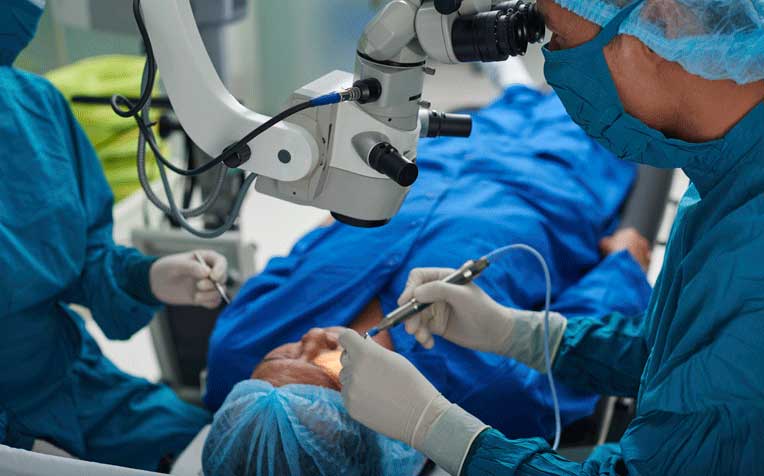
Cataract can be corrected with laser-assisted surgery such as with the femtosecond laser for greater precision and safety.
High precision cataract surgery vs conventional surgery
The femtosecond laser is a highly accurate surgical laser which can be used in high precision eye surgery, including cataract surgery.
What is a femtosecond laser?
A femtosecond laser emits optical pulses of extremely short duration in the domain of femtoseconds, as short as one-quadrillionth of a second (10-15 sec).
“With these ultra-short pulses, tissue can be cut more precisely and with practically no heat development,” explains the Ocular Inflammation & Immunology Department from Singapore National Eye Centre (SNEC), a member of the SingHealth group.
Femtosecond laser surgery vs conventional cataract surgery: What's the difference?
Femtosecond laser-assisted cataract surgery offers an incremental level of accuracy and predictability over the current cataract surgery by phacoemulsification (using ultrasound technology). “It has the potential to make the procedure even safer with visual outcomes to match patient needs,” says the Ocular Inflammation & Immunology Department.
Conventional |
Femtosecond Laser-Assisted |
The surgeon uses a blade to make an incision on the cornea. | The femtosecond laser makes the incision on the cornea. |
Surgeon tears an opening in front of the lens capsule in order to access and remove the lens. | The femtosecond laser cuts a perfectly centered, circular shaped and sized opening in the lens capsule and the circular segment of the capsule is extracted manually. |
The cataract is separated manually and removed by phacoemulsification. | The femtosecond laser divides the lens into smaller pieces to ease the process of extraction with less ultrasound energy needed to remove the cataract. |
An artificial intraocular lens is then implanted to restore vision. | The cataract is extracted by phacoemulsification |
| An artificial intraocular lens is then implanted to restore vision. |
Advantages of femtosecond laser surgery
- Reduced risk of intraoperative complications, especially in more complicated forms of cataract.
- The laser system allows for highly accurate positioning and centering of the artificial intraocular lens, reducing optical aberrations and refractive errors.
- More predictable surgery by using laser to perform some of the manual steps of surgery.
- The small curved patient interface of the laser prevents flattening of the cornea and the pressure sensors moderate excessive pressure on the eye to prevent vision “blackout” during the laser procedure.
- Real time “live” imaging which tracks the progress of the procedure and gives real time feedback of eye images to the surgeon during the entire surgical process. This provides an added level of safety to patients.
- Lens fragmentation by laser reduces the amount of ultrasound energy used during phacoemulsification. This lowers the risk of capsule complications and corneal injury.
- The laser system reduces phacoemulsification power by 43 per cent and results in a 51 per cent reduction in effective phacoemulsification time.
- Due to a stronger capsule, it has the potential to reduce the risk of capsular tear and intraoperative complications during cataract surgery.
Ref: L20
Contributed by

















 Get it on Google Play
Get it on Google Play